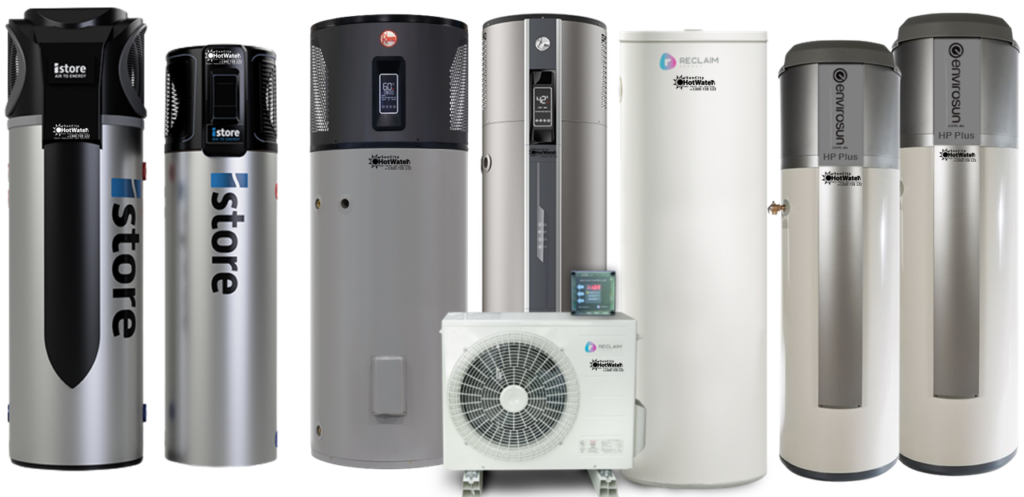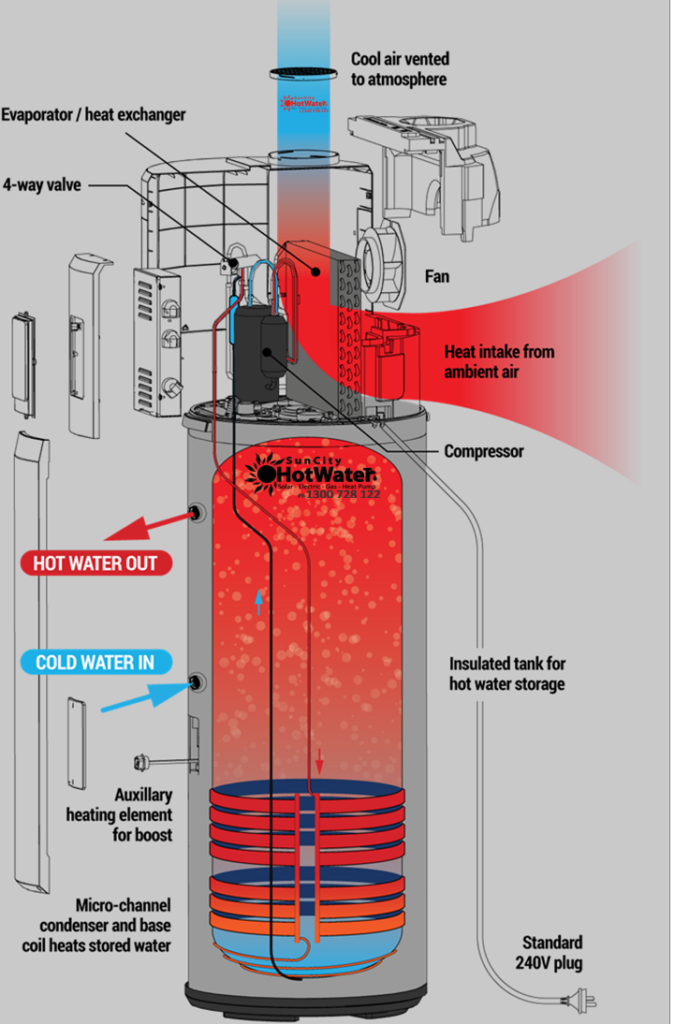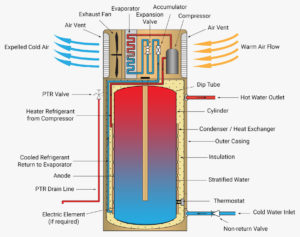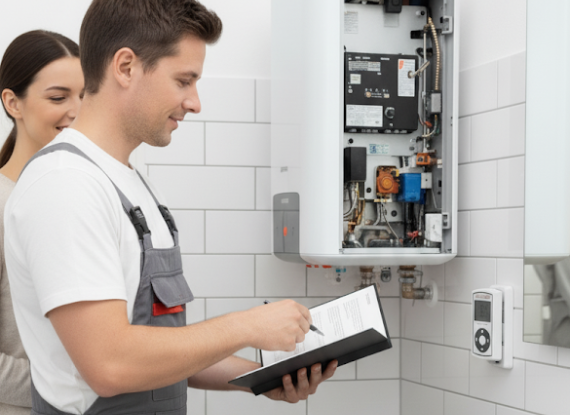Caloundra Hot Water outlines how heat pumps operate using a series of stages that make them very efficient at heating water.
First, a liquid refrigerant moves through an evaporator where it draws heat from the surrounding air and vaporises into a gas.
Next, an electric compressor compresses that gas, increasing its temperature so it becomes hotter than the water in the storage tank.
That hot gas then passes into a condenser, where it releases its heat to the water and condenses back into a liquid.
The liquid continues through an expansion valve where its pressure is lowered, cooling it so it can return to the evaporator and repeat the cycle.
Electricity powers the compressor and the fan, but unlike conventional electric hot water systems that heat water directly, a heat pump transfers heat from the air into the water. This lets it move a lot more heat energy while consuming much less electricity. Performance varies with outside air temperature — heat transfer is easier when the air is warmer than the refrigerant gas, and less effective in colder conditions — although many modern heat pump hot water systems are engineered to work in sub-zero temperatures. In some situations they can also be installed indoors in well-ventilated large spaces like garages.
To keep the evaporator continually absorbing heat, a constant supply of fresh air is required. A built-in fan circulates air and expels the cooled air back into the environment.
Heat pump water heaters come in two primary configurations.
Integrated or compact units house the compressor and storage tank within a single package.
Split systems separate the compressor and the tank, similar to a split air conditioner, linking them with refrigerant piping.






